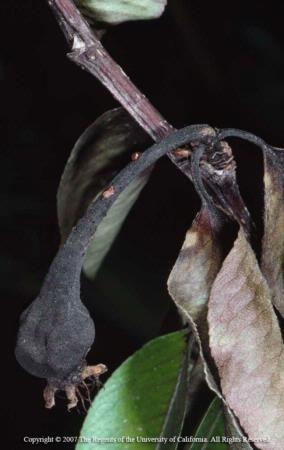Caused by the bacterium Erwinia amylovora, fire blight is a common and frequently destructive disease of pome fruit trees and related plants.
Symptoms commonly appear in spring. The first sign is usually a watery, light tan ooze that leaks from cankers. After being exposed to the air, the ooze darkens and leaves streaking on branches or trunks. Other signs of infection are petal fall, flower stem wilt, and the blackening and shriveling of flowers, shoots, and/or young fruit.
As the disease progresses, the pathogen spreads into the wood. The infected wood tissue can become sunken and cracks often develop in the bark around the infected areas.
Ideal conditions for infection, disease development and spread of the pathogen are rainy or humid weather with daytime temperatures from 75 (degree sign) F to 85 (degree sign) F.
Home Gardeners can learn more about fire blight in UC IPM’s Pests in the Gardens and Landscapes: Fire Blight publication. Subjects include: identification and damage; life cycle; and management.
Commercial growers can find fire blight information by crop on UC IPM’s Agricultural pest page.
